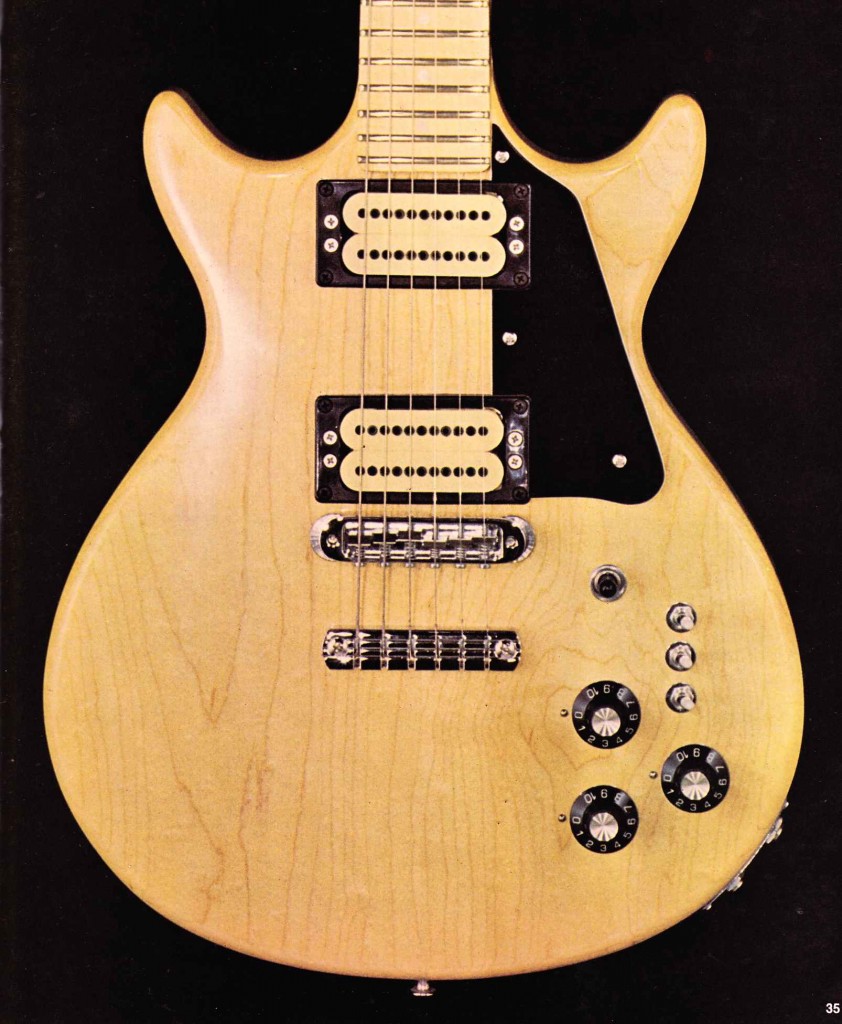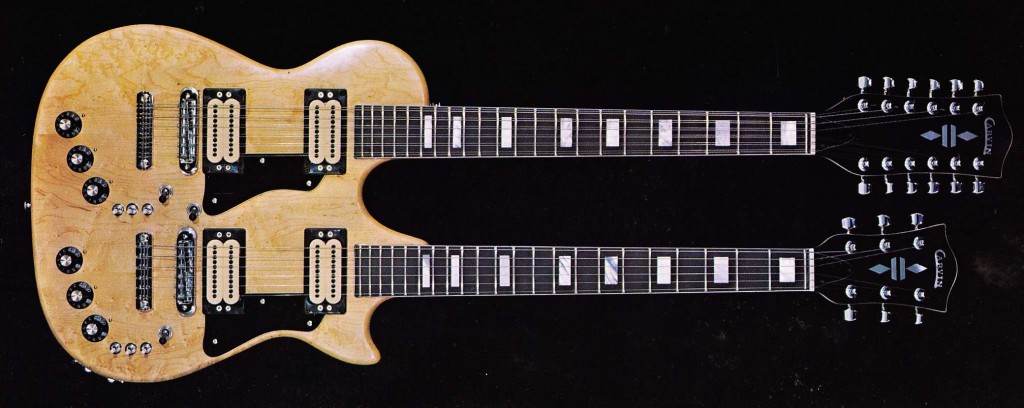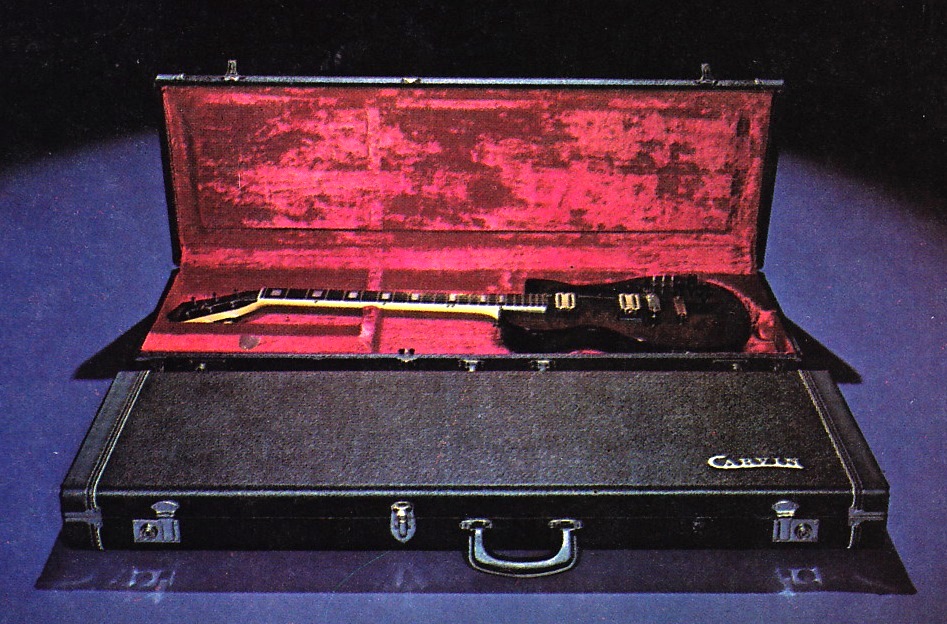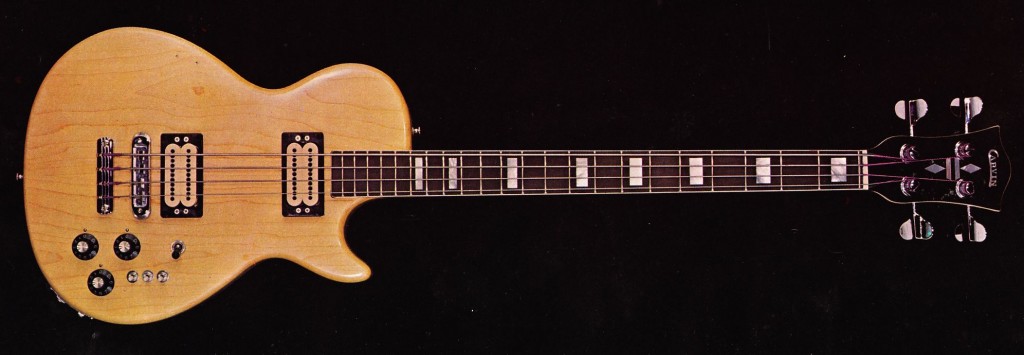 Continuing our series on Carvin Musical Instruments of the 1970s: the complete Carvin electric guitar line-up of 1978. Download a twelve-page scan of the 1978 catalog:
Continuing our series on Carvin Musical Instruments of the 1970s: the complete Carvin electric guitar line-up of 1978. Download a twelve-page scan of the 1978 catalog:
DOWNLOAD: Carvin_guitars_1978
Products on offer include: Carvin DC150C, DC150B, CM140, CM130, and CM120 electric guitars; the Carvin CB100 stereo bass, and the DT630 and DB630 doubleneck instruments.
 By 1978, Carvin had abandoned the slightly Fender-influenced European-made guitar components they had been using since the late 60s; the 1978 lineup is much more Gibson influenced; or maybe Gibson-by-way-of-Alembic. Noteable late-70s trends at work here include: solid brass hardware; heavier (8.5 lbs) instruments; humbucking pickups with coil taps; ‘natural’ finishes; and plentiful control knobs/switches ala Alembic and BC Rich.
By 1978, Carvin had abandoned the slightly Fender-influenced European-made guitar components they had been using since the late 60s; the 1978 lineup is much more Gibson influenced; or maybe Gibson-by-way-of-Alembic. Noteable late-70s trends at work here include: solid brass hardware; heavier (8.5 lbs) instruments; humbucking pickups with coil taps; ‘natural’ finishes; and plentiful control knobs/switches ala Alembic and BC Rich.
 One odd holdout from the earlier era of the electric-guitar is the fact that these instruments shipped with a guitar-cable included. I wonder when this practice finally ended. Seems like a cable more ought to come with an amplifier than with a guitar… Also notable that the bass-instruments shipped with flatwound strings standard. I have noticed that there is a definite trend lately for electric-guitar players to use flatwound strings again; I have been really enjoying the sound of flatwounds on my 60s Fender and Harmony guitars; it’s kinda the secret ingredient to get the sound of 60s records (assuming yr using an old gtr and an old amp as well). The only problem is that they are more expensive. $12 vs $5 for roundwounds. On the other hand, they rarely break, and it’s not necessary to change them as often, as a ‘dulled’ sound is sorta the point.
One odd holdout from the earlier era of the electric-guitar is the fact that these instruments shipped with a guitar-cable included. I wonder when this practice finally ended. Seems like a cable more ought to come with an amplifier than with a guitar… Also notable that the bass-instruments shipped with flatwound strings standard. I have noticed that there is a definite trend lately for electric-guitar players to use flatwound strings again; I have been really enjoying the sound of flatwounds on my 60s Fender and Harmony guitars; it’s kinda the secret ingredient to get the sound of 60s records (assuming yr using an old gtr and an old amp as well). The only problem is that they are more expensive. $12 vs $5 for roundwounds. On the other hand, they rarely break, and it’s not necessary to change them as often, as a ‘dulled’ sound is sorta the point.
 Previous 1970s Carvin coverage on PS dot com begins here…
Previous 1970s Carvin coverage on PS dot com begins here…
5 replies on “Carvin Co. electric guitars of 1978”
I like flat-wounds strings, especially on bass guitars, and they do work well for mellow jazz tones on guitar. It’s nice to pick up an old instrument with flat-wound strings and see very little fret-wear, because they don’t eat the frets like round-wound strings do.
The pickups were about all that was any good on the old Carvins. Zappa had them in various Les Pauls and other guitars he had, and I’ve see the seven string ones put in on a slant on six strings, which works well sometimes. Particularly Teles if you don’t mind routing.
You gotta be joking. The Carvins had the best build quality in the industry in the late 70s and early 80s, except for Rickenbacker, and a Rick is a specialized type of guitar. I still have the DC150 my dad bought me as a high school graduation present in 1985.
I have two newer ones ( a DC125 and a nylon string thinline) and I think Carvin is the best deal in a quality built guitar there is. I play in an oldies band where the leader insists on vintage looking gear and when I do, I have Strats and a Gibson 330. I miss my Carvins whenever I have to play those old beaters.
I ordered my Carvin CB-100 bass in 1978 when I was with the Coast Guard stationed at Air Station Kodiak. What I didn’t know then was the relationship that would be built over the years with that bass. Today, I have a Rick 4001, a Gibson Thunderbird, an American Guild acoustic and none play like butter or sound like a thunderstorm like my CB-100.
Flatwounds are easy on frets and fingers, but there’s no getting a rock and roll sound out of them. That’s why I play P-Basses: it’s cheaper now to just buy a new Warmoth neck than find someone to do a decent fret job any more. No one wants to pay their dues and learn this kind of work.